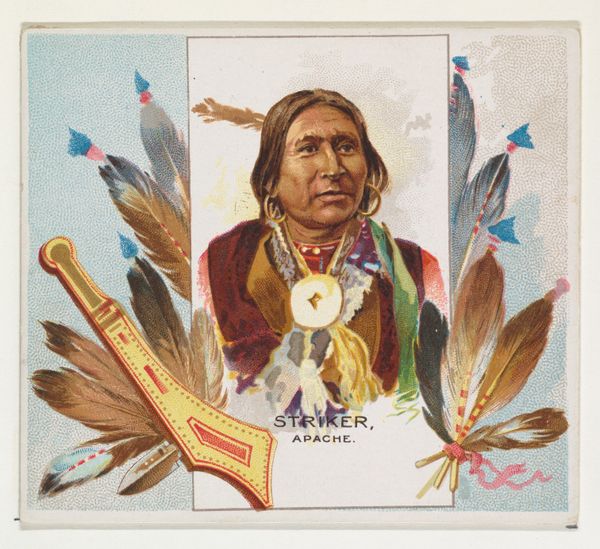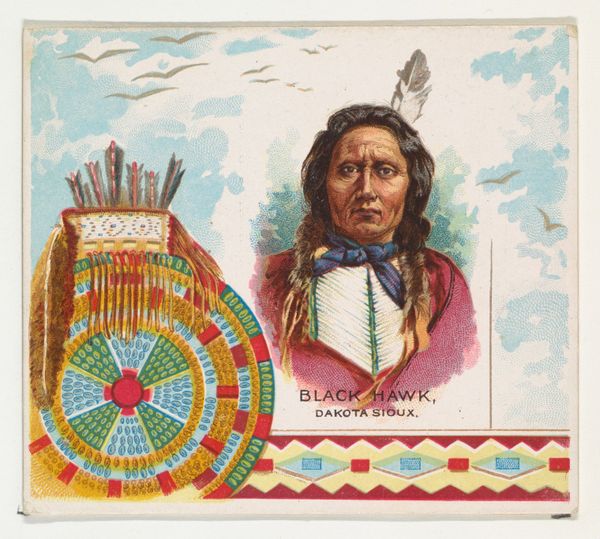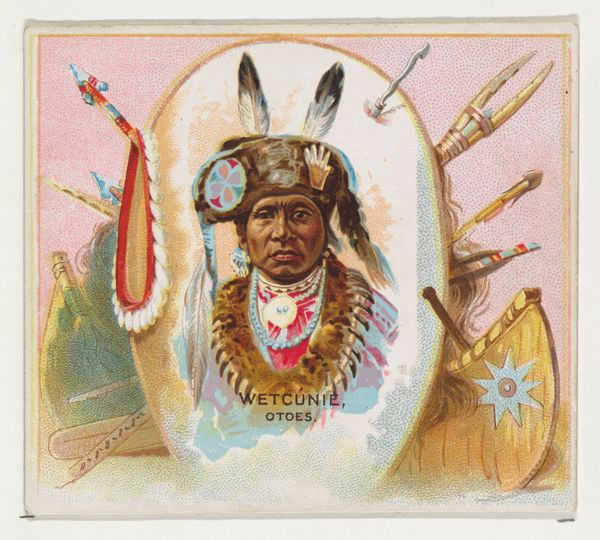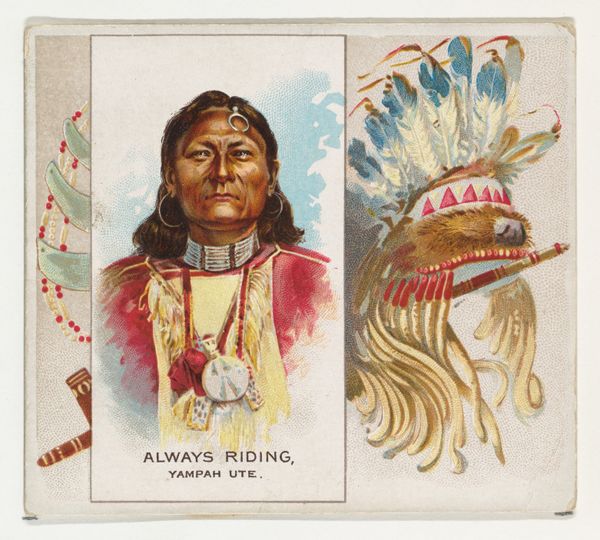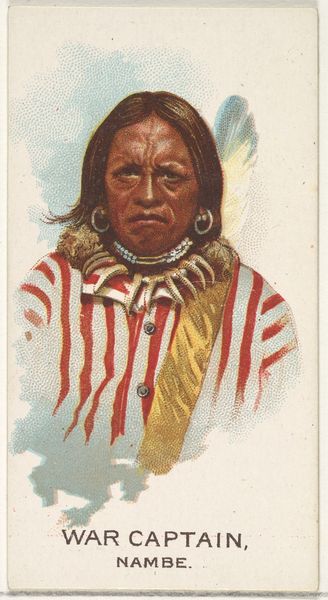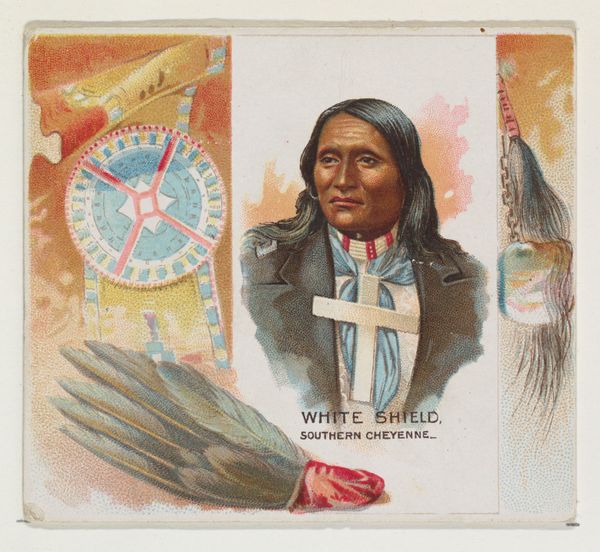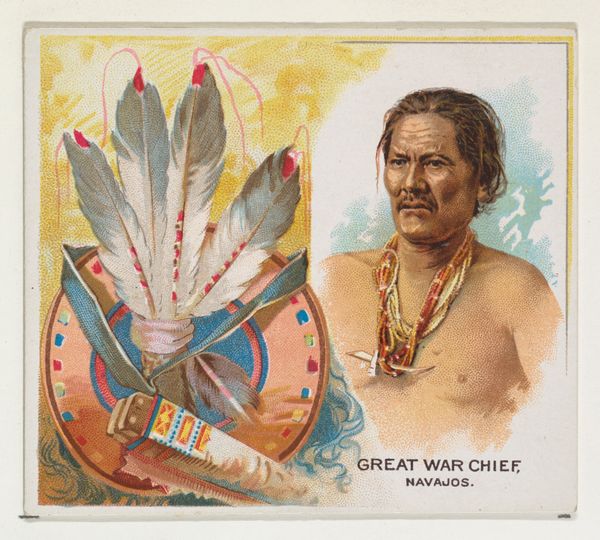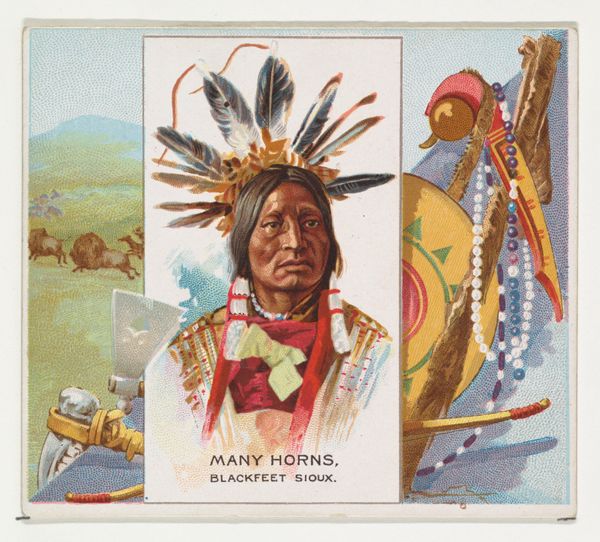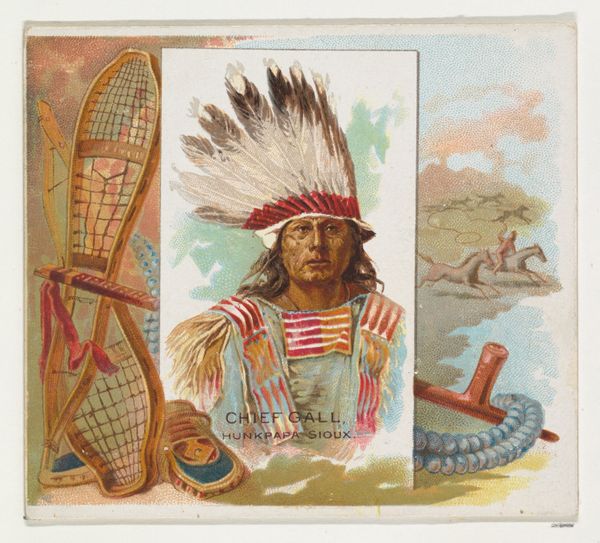
War Captain, Nambe, from the American Indian Chiefs series (N36) for Allen & Ginter Cigarettes 1888
0:00
0:00
drawing, coloured-pencil, print
#
portrait
#
drawing
#
coloured-pencil
# print
#
caricature
#
coloured pencil
#
folk-art
#
naive art
#
watercolour illustration
#
portrait art
Dimensions: Sheet: 2 7/8 x 3 1/4 in. (7.3 x 8.3 cm)
Copyright: Public Domain
Curator: This striking portrait is entitled "War Captain, Nambe," part of the "American Indian Chiefs" series created by Allen & Ginter Cigarettes in 1888. It's currently housed at the Metropolitan Museum of Art. Editor: My first thought: the printwork here really captures something interesting between idealization and something… less romantic. What about the actual *process* here – cigarette cards depicting Native figures? I bet there's an ironic twist. Curator: Precisely. The series is rife with visual shorthands. The captain’s accessories – the axe, bow, arrows, and feather – aren't just decoration; they function as power symbols, and reminders of Nambe culture packaged for a mainstream audience. Editor: Absolutely, and those colors are very of the period – the reds, browns and the very flat rendering make the entire process feel really artificial. Like we're viewing someone through a commercial lens and a material one too. What was the actual printmaking process? Curator: The original artwork, to my knowledge, involved colored pencils and drawings – typical chromolithography reproduction of the time would rely on some kind of photograph too for source material. Consider, the tobacco companies commodified Native identity to sell cigarettes, playing on notions of frontier life and rugged individualism that weren't entirely truthful. Editor: This is really interesting... seeing Indigenous life turned into collectible ephemera to fuel a different kind of addiction feels extremely cynical and a little shocking. It would be hard to know how to unpack it all through an audience. Curator: I agree, the very distribution of this image speaks to the culture. Note the stoic visage of the Captain; is it authentic, or crafted for a Victorian audience? This ambiguity creates layers of meaning, open to interpretation and challenging our preconceptions. It's a representation, designed to resonate within a particular cultural context. Editor: Well, I appreciate knowing a bit more about its process, as far as the choices behind materials. To examine those roots makes a difference and maybe opens the audience’s mind a little. Curator: Indeed. This small card invites us to think critically about representation, commodification, and cultural memory.
Comments
No comments
Be the first to comment and join the conversation on the ultimate creative platform.


